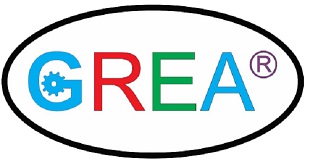POOL CHESS RULES:
The rule is very simple, which makes it all the more easy to understand and start playing immediately.
- Rule1: In this variant, pieces collide with each other and push each other like in a pool/billiard/carrom game ! Piece1 of color1 in square1 moves as per standard chess rules and collides with another piece2 of color2 at square2, and can push piece2 further in the same direction as the direction of movement of piece1 ! Refer figs below for example moves based on this rule.
- Rule2: The chess board has pockets like in a pool game! A piece2 is captured by opponent piece1, only when piece2 is pushed into a pocket by piece1! Refer figs below for example capture moves based on this rule.
- Rule3: All the squares outside of the 8×8 playing arena are pockets !
- Rule4: Piece2 can be pushed only when there is no obstruction to its movement in the direction of push.
- Rule5: Pawns can push only in the direction of capture (diagonal moves). Pawns cannot push in the regular forward direction move.
- Rule6: The player can decide the force of collision, which decides how far piece2 is pushed forward by piece1! Piece2 can be pushed all the way till it drops (and hence gets captured) into a pocket or can stop at any square before the pocket.
- Rule7: TopSpin is allowed like in a pool game, which allows piece1 also to move forward after collision beyond the collision zone !
- Rule8: Knight, King and pawn cannot use TopSpin option, as their movements are restricted to 3,1,1 square respectively in a standard chess game !
- Rule9: The game ends when a king is captured by getting pushed into a pocket.
- Rule10: Pushing may result in 2 bishops of same color being on the board, which is allowed !!

Rule1 example: Nf3 can push the pawn at e5 to any one of the following squares : d5, c5, b5, e6, e7, e8, e9 , where e9 push will be a capture of the e5 pawn, as e9 is a pocket.
Rule2,3 example: All the border squares are pockets, into which pieces can be pushed for capture. There are a total of 36 pockets ( a0 to h0, a9 to h9, i0 to i9, z0 to z9 form the 36 pockets ).
Example captures:
Capture1: Nf3 can capture e5 pawnby pushing it to e9 pocket.
Capture2: Bg6 can capture e4 pawn by pushing it into a0 pocket.
Capture3: Bd4 can capture e5 pawn by pushing it into i9 pocket. Alternately Bd4 can push e5 pawn to any of the following squares: f6, g7, h8.
Capture4: Black pawn at e5 can capture Bd4 by pushing it to the bottom left pocket z0.
Capture5: Ra8 cannot capture Qa5 ,as pawn at a4 is blocking the push. But Qa5 can capture the Ra8 rook by pushing it into pocket a9!
Alternately Bd4 can push e5 pawn to any of the following squares: f6, g7, h8.
Rule4 examples: Nf3 cannot push the g5 pawn, because the pushing space is blocked by h5 pawn and Bg6!
Rule5 example: Pawn at e5 can push or capture the Bd4 , but can’t push the e4 pawn, as it is not in the direction of capture.
Rule6 example: Nf3 can push the e5 pawn into any one of the following squares: e6, e7, e8 or e9 . This is choice of the player controlling the white Horse piece at Nf3.
Rule7 example: Bd4 can push the e5 pawn to into any one of the following squares: f6, g7, h8 or i9 as per rule6. When e5 pawn is pushed to i9 pocket, the Bd4 can stop at any one of the following squares : f6, g7 or h8 (using the top-spin rule). This is choice of the player controlling the white bishop at Bd4.
Rule8 example: The horse at Nf3 cannot use the top-spin rule and must stop at e5 square, after pushing the e5 pawn away. The pawn at e5 cannot use the topspin rule and must stop at d4 square, after pushing the Bd4 piece away.
Rule9 example: White can checkmate the black king at c8 by playing the Qa5 to Qc7! Even though there is no supporting piece for the white king at Qc7, the black king still cannot capture the Qc7, bcos of the c6 pawn !
Rule10 example: Nf3 can push Bd2 to Bc2 , which will result in two black bishops at white squares, which is allowed in Pool chess !
© https://greamake.com/vchess
Thats all about the rules! Enjoy this cool pool chess and let us know your feedbacks
at greaMake@gmail.com
